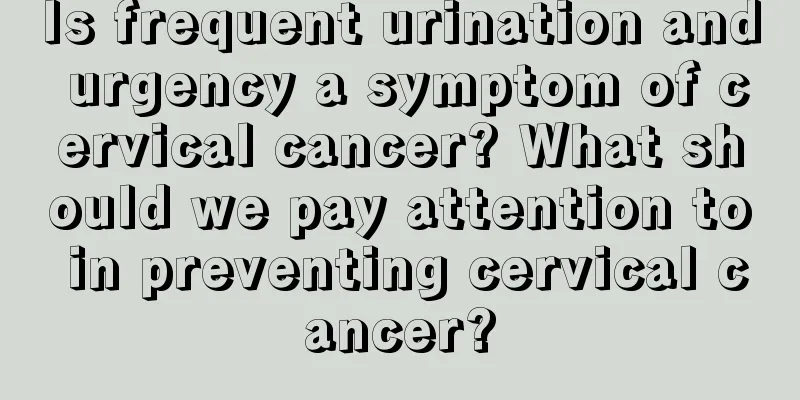Nursing points for patients receiving nasogastric feeding

|
We have seen many patients who are completely unable to move after being injured. It can be said that their mouths cannot eat at all. However, the nutrients in the patient's body need to be replenished in time. At this time, many medical staff will provide nasogastric feeding for the patients. Nasogastric feeding is the process of inserting a tube through the nose into the patient's stomach, and then providing food supplements to ensure the patient's body functions. So what are the key points in nursing patients receiving nasogastric feeding? 1. Secure it properly to prevent it from buckling and falling out. A. To fix the gastric tube, white rubber tape should be applied to the tip of the nose and the tape should be changed every day. B. The length of the gastric tube inserted should be appropriate, generally about 45-55cm for adults. If you suspect the gastric tube has come out, notify your doctor immediately. At this time, nasogastric feeding should be temporarily stopped and nasogastric feeding can only be continued after making sure that the gastric tube is in the stomach. [Note] Method to determine whether the gastric tube is in the stomach: Use a syringe to draw out the stomach contents from the gastric tube. Use a syringe to inflate the gastric tube and use a stethoscope to listen for the sound of air passing through water in the stomach. Insert the stomach tube into the water without escaping bubbles. C. Keep the gastric tube open to prevent it from getting kinked. When moving or turning the patient, prevent the gastric tube from coming out or getting folded. 2. Ensure the patency of the gastric tube and flush and aspirate gastric juice regularly. A. Rinse regularly, once every 4 hours. When flushing, you should choose a 5 or 10 ml syringe and use 3-5 ml of normal saline to flush the gastric tube according to the model of the gastric tube, surgical site, surgical method, etc. Be careful not to use too much force when rinsing. If there is resistance, do not force it forward to avoid damaging the stomach wall or anastomosis, causing bleeding or anastomotic fistula. If there is resistance during flushing, gastric juice should be withdrawn first. If gastric juice is withdrawn, it means the gastric tube is unobstructed and flushing can be continued. If gastric juice cannot be extracted or the flushing resistance is great, you should notify your doctor and receive timely treatment. B. Aspirate gastric juice regularly according to the secretion of gastric juice, usually once every 4 hours. When aspirating gastric juice, the suction force should not be too great to avoid damaging the stomach wall and causing mucosal injury and bleeding. 3. Closely observe the color, nature, and amount of gastric juice and keep records. 4. Gastric tube care A. Clean your nasal cavity with a cotton swab dipped in water every day. B. When changing the tape, wipe the facial skin clean before applying it again, and be careful not to apply it to the same part of the skin. C. The exposed part of the nasogastric tube must be properly placed to avoid it from slipping. D. Pay attention to the scale of the nasogastric tube every day. If it is dislocated, notify the medical staff to handle it. E. Clean the mouth daily with a cotton swab; if the patient is conscious and cooperative, use a toothbrush to clean the mouth. Encourage patients to brush their teeth and rinse their mouths and develop good hygiene habits. Provide oral care to patients who are unable to take care of themselves or who are unconscious. F. If the patient is unconscious or agitated and uncooperative, the nasogastric tube must be prevented from being pulled out. If necessary, the patient's hands can be properly restrained and protected. 5. Nasogastric feeding care: A. Before nasogastric feeding, make sure that the tube is in the stomach and there are no symptoms of abdominal distension or gastric retention. B. The nasogastric feeding volume should not exceed 200 ml each time. It should be reasonably allocated and the interval time should be set according to the total daily volume and the patient's digestion and absorption conditions. After nasogastric feeding, rinse the nasogastric tube with warm water and place it in place. Continuous nasogastric feeding should be evenly infused. C. The temperature of nasogastric feeding should be appropriate, around 35℃. The temperature of the nasogastric feeding fluid should be the same as room temperature during continuous infusion. Overheating can easily burn the stomach wall mucosa, while overcooling can easily cause indigestion and diarrhea. Clean oral and nasal secretions promptly. D. The amount of nasogastric feeding may be small at the beginning. After the patient adapts, gradually increase the amount and accurately record the amount of nasogastric feeding. |
<<: Four key points of effective communication skills
>>: Do I need to remove the mole on my spouse's palace?
Recommend
Prevention of posterior reversible encephalopathy syndrome
Which treatment methods should be chosen for reve...
Liver cancer is easily misdiagnosed as four diseases. There are three magic weapons to treat liver cancer
As the number of patients with liver disease incr...
How to keep bangs from sticking to forehead
Bangs can not only make a person more lively and ...
Which cakes are likely to cause liver cancer? Eating these five kinds of cakes can easily lead to liver cancer
Don't buy these five types of cakes or you ma...
How to prevent colon cancer
Experts point out that early stage colorectal can...
Will breast cancer metastasize after surgery in the middle and late stages?
In fact, how many more years a patient can live a...
What are the effective methods to remove formaldehyde
The harm of formaldehyde is relatively large, esp...
Will infection with Helicobacter pylori definitely lead to stomach cancer?
Being infected with Helicobacter pylori does not ...
What is the difference between asthma and bronchitis
Asthma and bronchitis both have some symptoms and...
Does Black Ancient Vine Longevity Tea have any side effects?
Tea is a relatively healthy drink, and many peopl...
Can ct detect bile duct cancer?
CT examination can be used as an important tool f...
What are the common causes of hypokalemia
Hypokalemia has a great impact on the patient'...
What are the nursing methods for melanoma
In recent years, melanoma has gradually evolved i...
What is causing joint pain
When the human body has problems, some symptoms w...
What is the difference between soy sauce and soy sauce
Although soy sauce is a condiment available in ev...









